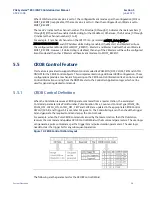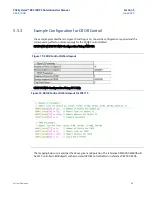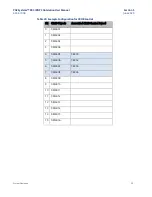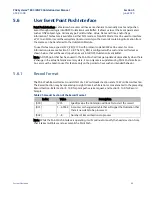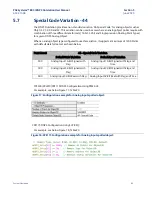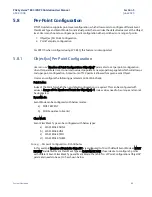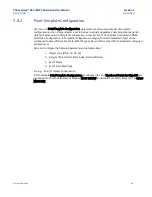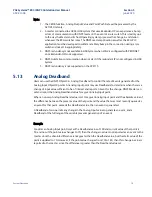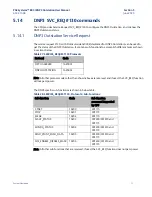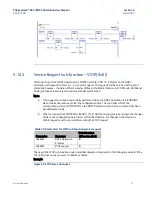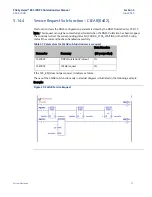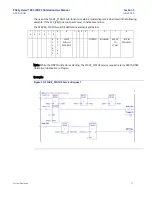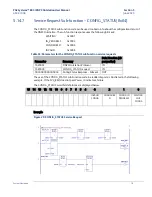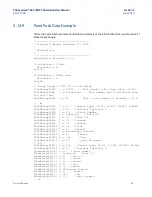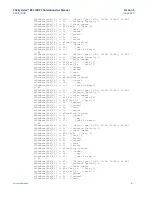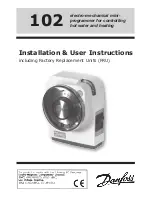
PACSystems™ RX3i DNP3 Outstation User Manual
Section 5
GFK-3103B
June 2020
System Operation
69
5.11
DNP3 Flags - Quality Force
Users can us
e ‘
Enable Quality Force
’
parameter in the DNP3 Outstation to Enable / Disable the forcing
of the ONLINE bit to Set/Re-Set in DNP3 Objects Flags.
When this parameter is Enabled, parameter QF Memory Address is populated with CPU Reference
address in the PME, this reference address can be used to control the Quality State of DNP3 objects to
set Online / Offline when there is a change in the point data. If parameter is set to Disable, then Quality
Force will not be applicable, and Quality will be driven by the CPU RUN/STOP state.
Below is the state table:
Table 26: Quality Force State Table
CPU RUN
State
Data in QF Memory
Address
Quality State
in Flags
STOP
0
Offline
STOP
1
Offline
RUN
0
Offline
RUN
1
Online
Note: Users can use this reference address and set its value in runtime logic to interlock quality state
with other interlocks.
5.12
DNP3 Redundancy Feature
The CPE400/CPL410 DNP3 utilizes Redundant IP feature allowing two HSB CPE400/CPL410 controllers
to appear as one DNP3 Outstation module.
DNP3 Redundancy has two CPE400/CPL410 Units in a Hot-Standby setup
–
Primary unit and Secondary
unit. Primary or Secondary status of a unit is decided by the PME configuration. The unit which goes
into Run mode first in a Redundancy setup will act as an ACTIVE unit and the other unit will
automatically take up the BACKUP unit role. DNP3 Master establishes communication with DNP3
Outstation ACTIVE unit using Redundant IP. Events are always generated and reported to DNP3 Master
by ACTIVE Unit only.
Events generated in the ACTIVE unit are always synchronized to the BACKUP unit in every CPU sweep
cycle. This allows users to not lose any events when there is a single point failure in the current ACTIVE
CPU.
For detailed Operation of HSB Redundancy system refer the
PACSystems Hot Standby CPU Redundancy
User Manual, GFK-2308
.


